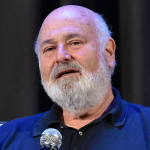Vladimir Putin’s disdain for Ukraine’s president Volodymyr Zelensky reached its apex on February 25 in a bizarre speech, where he referred to the leadership of Ukraine as “a gang of drug addicts and neo-Nazis”. Putin also spoke about his desire for a new regime in the country. Many were left wondering how he would achieve the regime change and go about installing a more agreeable government.
Even before he launched a full-scale invasion of Ukraine, many observers invoked history to make sense of Putin’s intentions. Some voiced concerns over the possibility of a “new Yalta”, in reference to the 1945 Yalta Conference that divided Europe. into eastern and western spheres of influence. Others raised the possibility of a new Munich, after the 1938 Munich agreement, synonymous with the policy of appeasement.
It is possible that Putin took inspiration from another, long-forgotten piece of Ukrainian history, and from the playbook of the Bolsheviks. The Bolsheviks represented a left-wing faction of the Russian Social-Democratic Workers’ Party. Under Vladimir Lenin’s leadership, they seized control of the government in Russia in November 1917 and subsequently became the ruling party in Soviet Russia and, later, the Soviet Union.
In December 1917 in Kharkiv, the second largest Ukrainian city, the Bolsheviks declared Ukraine a Soviet republic and formed a government. This government lacked legitimacy – earlier that year, Ukraine had already established the highest national authority, the Central Rada (council). The Rada enjoyed broad societal support and had been recognised by the provisional government in Russia that came to power as the result of the Russian Revolution of February 1917.
The problem was that the Central Rada did not recognise the Bolsheviks’ authority over Ukraine after the coup in November 1917. This was reflected in a solemn proclamation, the Third Universal. Adopted by the Rada, this document established the Ukrainian People’s Republic as an autonomous part of the federation with Russia. Ukrainian autonomy was not in Bolshevik plans, but they knew that directly denying the Ukrainian people’s choice would have been met with fierce opposition. So they decided to create a puppet government in Kharkiv.
It is important to note that the creation of the Kharkiv government was made possible by the prior occupation of Kharkiv by the Bolshevik troops. The existence of two governments in Ukraine appeared to external observers like local infighting, while in reality the Kharkiv government was controlled by the Bolsheviks from Russia. The Bolsheviks ultimately launched an assault on the Ukrainian People’s Republic in Kyiv, leading the Central Rada to flee the country.
While we may never know whether Putin took inspiration from the Bolsheviks to launch his attack on Ukraine’s sovereignty, it’s easy to see the similarities to the events of 1917.
Propaganda machine
The events of December 1917 also offer some insight as to how the recent invasion was successfully sold to the majority of the Russian population.
Those following Russian media in recent months will have noticed the concern among Russian authorities about Ukraine’s growing hostility towards the self-proclaimed republics of Donetsk and Luhansk. Ukraine denied Russian accusations of a build-up of Ukrainian troops and intensified shelling near the Donbas border.
But this was of little importance for Putin’s domestic audience, largely under the influence of the Russian propaganda machine. Large swathes of Ukrainian population were also subject to this influence, partly due to the ease of accessing Russian media.
Such domestic justification was also important in 1917. Then, like in 2022, presenting the war as an internal matter signalled to the world that the conflict had to be handled without external intervention. Interestingly, the Central Rada was able to return to Kyiv with the support of German troops in the spring of 1918, so external players were not fully excluded.
A lesson from history
Despite the similarities, Putin is unlikely to repeat the success of his Bolshevik predecessors in installing a puppet government and having it recognised outside of Russia, for at least two reasons.
First, the Ukrainian republic in 1917 did not have a proper army. Ukraine in 2022 is a very different story. Hardened by the years-long war in Donbas, where Russia is more than a sponsor but less than a party, Ukraine has considerably strengthened its security institutions.
What’s more, the availability of western intelligence on Russia’s intentions allowed Ukraine to amass a serious arsenal of weapons and ammunition ahead of the invasion. The growing territorial defence and volunteer units also played a key role alongside Ukraine’s armed forces in derailing the Kremlin’s plan for Blitzkrieg.
Second, the existence of social media and the internet has made Russia’s war against Ukraine much more than a domestic matter. While the domestic audience in Russia is still captive, the broadcasting of the war and alleged war crimes by Russian troops on Ukrainian soil is making it impossible for the international community to stand aside. Appalled at the sight of the barbaric bloodshed in the middle of Europe, people have come out in thousands to pressure their governments to support Ukraine.
Even in 1918, the Ukrainians demonstrated that a short-term victory does not amount to the success the Bolsheviks envisaged. In 2022, Ukraine has more global support. The more Putin persists with the war, the more he will push Russia into isolation.
Anastasiia Kudlenko does not work for, consult, own shares in or receive funding from any company or organization that would benefit from this article, and has disclosed no relevant affiliations beyond their academic appointment.










